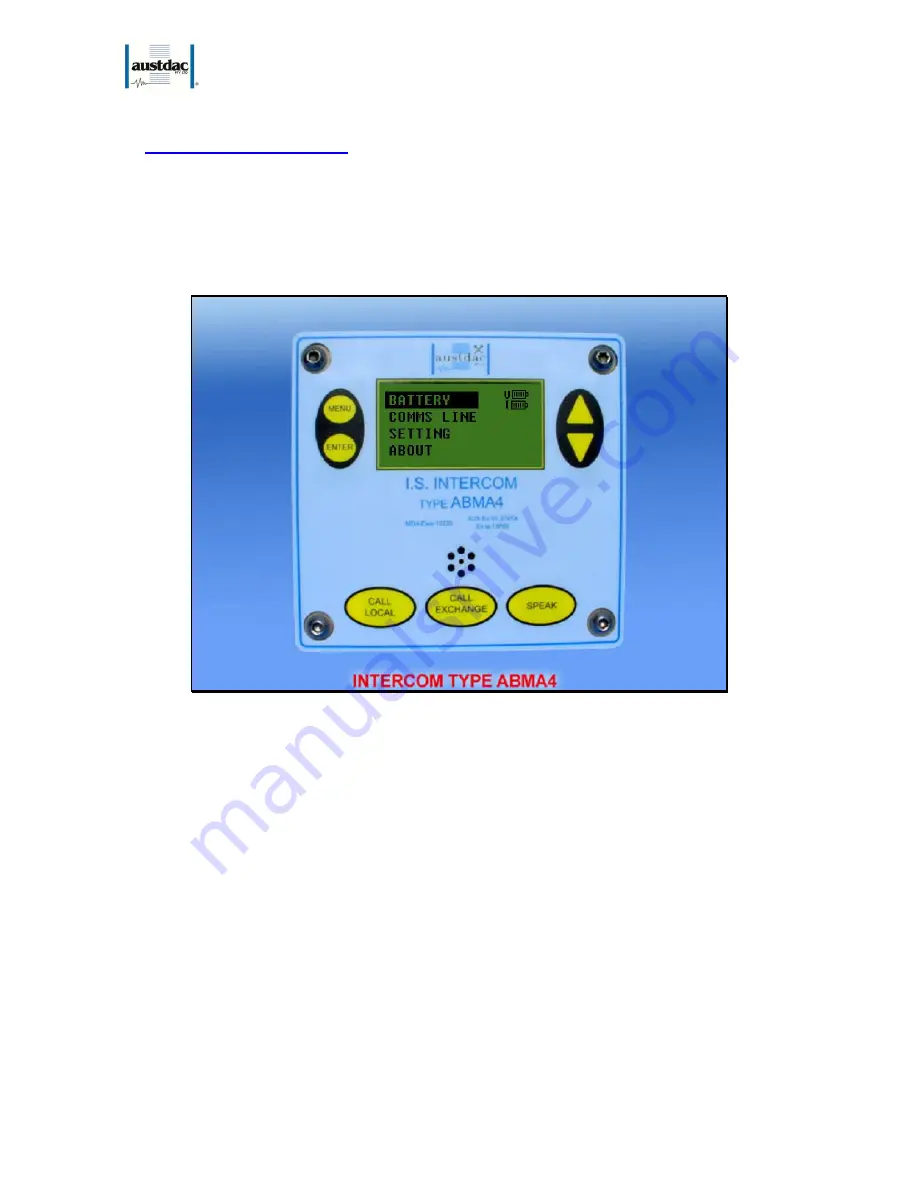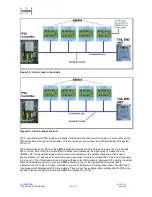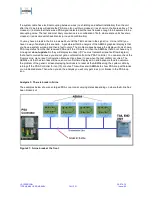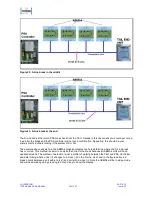
I.S. INTERCOM
20-278-12
TYPE ABMA4 USER MANUAL
4 OF 21
Issue: 05
1. GENERAL DESCRIPTION
This document should be read in conjunction with 20-079-12 user’s manual. The intercom type ABMA4
provides the audio communications and pre-start alarm sounding facilities of the PSACS1 system. Intercoms
are distributed along the conveyor at fixed distances apart to provide complete sound coverage along the
conveyor. During a pre-start sequence the intercom sounds the pre-start alarm through its two sideways
facing speakers. These same speakers and the front panel mounted microphone are used to carry out a half
duplex voice conversation with other intercoms on the conveyor or a surface located BMA exchange
operator. Photograph 4 below shows the front panel of a type ABMA4 intercom.
Photograph 1: Intercom type ABMA4 front view.
The intercom type ABMA4 has seven front panel mounted push buttons, a front panel microphone, an LCD
display and two side-mounted speakers to provide the voice communications interface for staff working
along the conveyor belt. The LCD display allows the operator to view operational and maintenance
information about the intercom and the PSACS1 system.
A conversation with another worker along the conveyor belt can be initiated by pressing the local call button
once or several times. The local call button is used to signal or attract the attention of workers along the
conveyor. The local call button can be pressed and released to sound a series of beeps along the conveyor.
The patterns and meaning of these beeps can be used to transmit messages to others along the belt.
The call exchange button is pressed to attract the attention of the BMA exchange operator at the surface.
Once the operator has acknowledged the call further instructions, such as patching requests, can be given
from the intercom.
The voice communications of the PSACS1 system is a half duplex i.e. only one party can speak at a time.
The speak button of the intercom must be pressed whenever the user wishes to speak. It is important to get
used to pressing the speak button just before speaking and releasing it just after finishing speaking. Failure
to control the speak button correctly will result in the beginning or end of a statement being cut off.



















